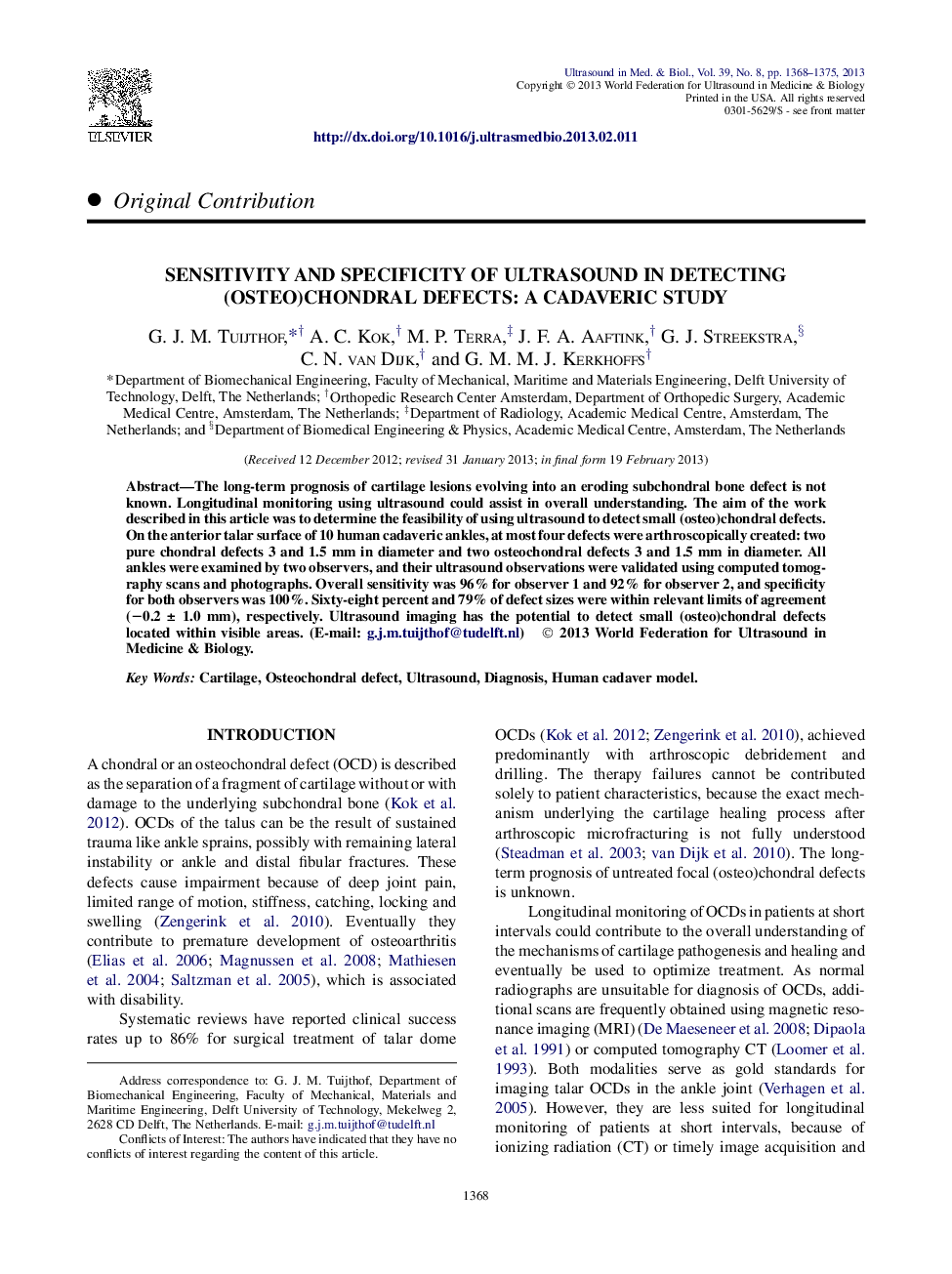| Article ID | Journal | Published Year | Pages | File Type |
|---|---|---|---|---|
| 10691483 | Ultrasound in Medicine & Biology | 2013 | 8 Pages |
Abstract
The long-term prognosis of cartilage lesions evolving into an eroding subchondral bone defect is not known. Longitudinal monitoring using ultrasound could assist in overall understanding. The aim of the work described in this article was to determine the feasibility of using ultrasound to detect small (osteo)chondral defects. On the anterior talar surface of 10 human cadaveric ankles, at most four defects were arthroscopically created: two pure chondral defects 3 and 1.5 mm in diameter and two osteochondral defects 3 and 1.5 mm in diameter. All ankles were examined by two observers, and their ultrasound observations were validated using computed tomography scans and photographs. Overall sensitivity was 96% for observer 1 and 92% for observer 2, and specificity for both observers was 100%. Sixty-eight percent and 79% of defect sizes were within relevant limits of agreement (â0.2 ± 1.0 mm), respectively. Ultrasound imaging has the potential to detect small (osteo)chondral defects located within visible areas.
Related Topics
Physical Sciences and Engineering
Physics and Astronomy
Acoustics and Ultrasonics
Authors
G.J.M. Tuijthof, A.C. Kok, M.P. Terra, J.F.A. Aaftink, G.J. Streekstra, C.N. van Dijk, G.M.M.J. Kerkhoffs,
